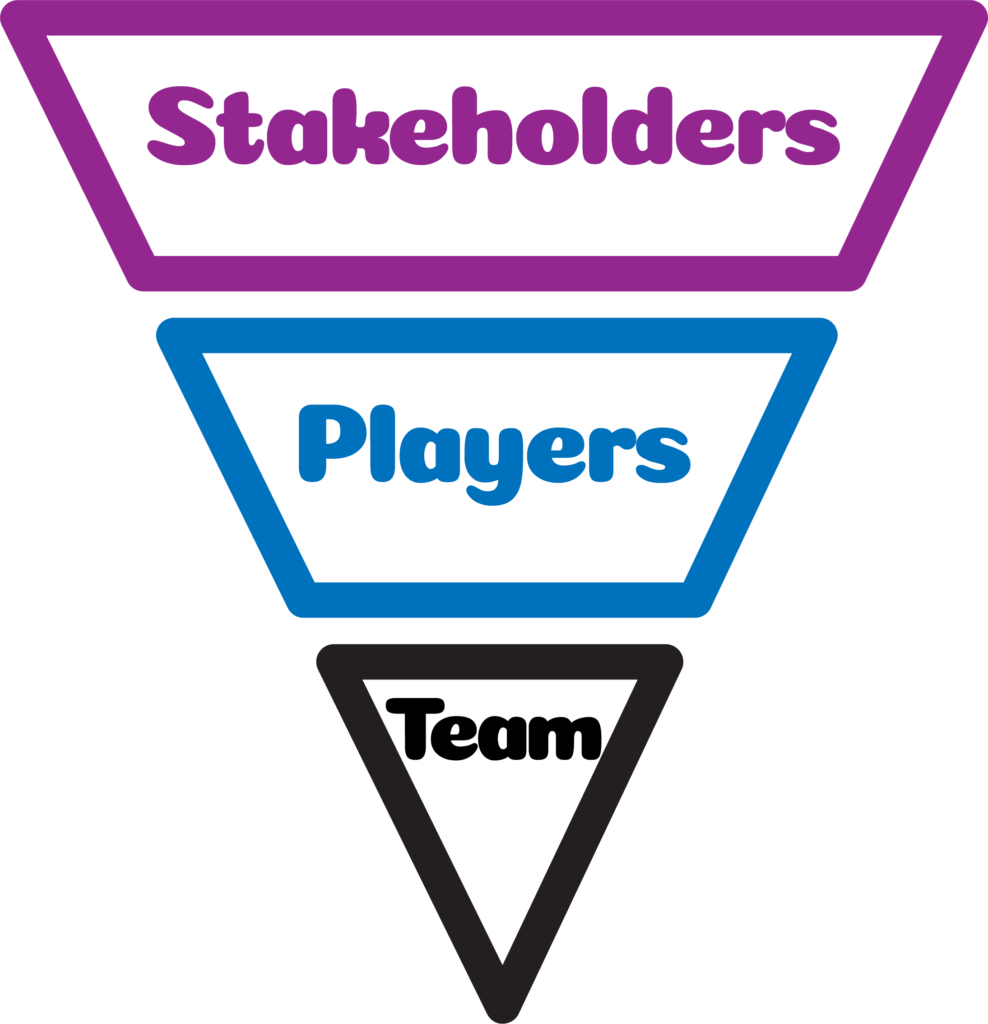The main stakeholder in any project is the client. The client is the one whose needs are the driving force behind the project and is likely to be the one who will derive the most benefit from the project upon its completion.
Differentiation must be made between the paying clients and the clients who are the ultimate end users of the project’s outcome. When estimating a project’s success or failure, the primary indicator is client value. If the end user client does not derive the expected value from the project deliverables, then the project has failed—even if the project has met all the objectives set out by the paying client.
Identifying stakeholders is essential both for managing the involvement of those who derive some benefit from the project, and for managing the objections of those with whom the project results do not benefit.
The stakeholders in the project may be many and varied, including:
In general, the stakeholders in the project can be presented in an inverted pyramid which:
- At the bottom is the team assigned to the project, which the project manager formally manages – whether by virtue of authority or not.
- In the middle are the “players” in the project, those stakeholders who play some role in the project but are not part of the project team.
- At the top of the pyramid are stakeholders who have some interest in the project, whether as beneficiaries of it or as opposed to it.

